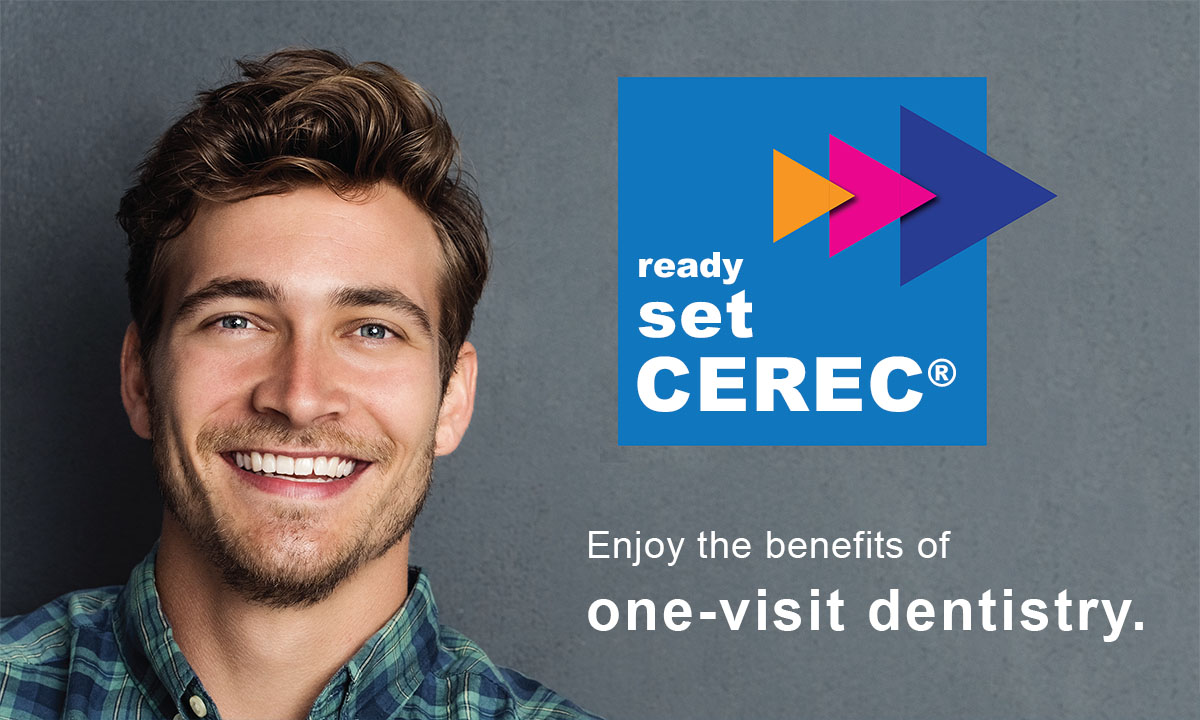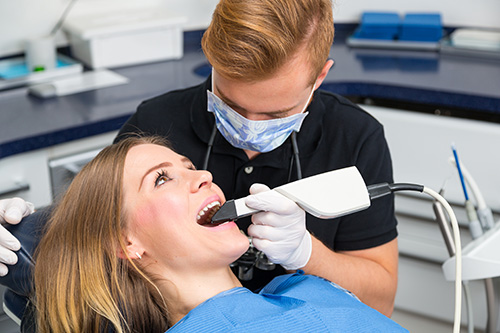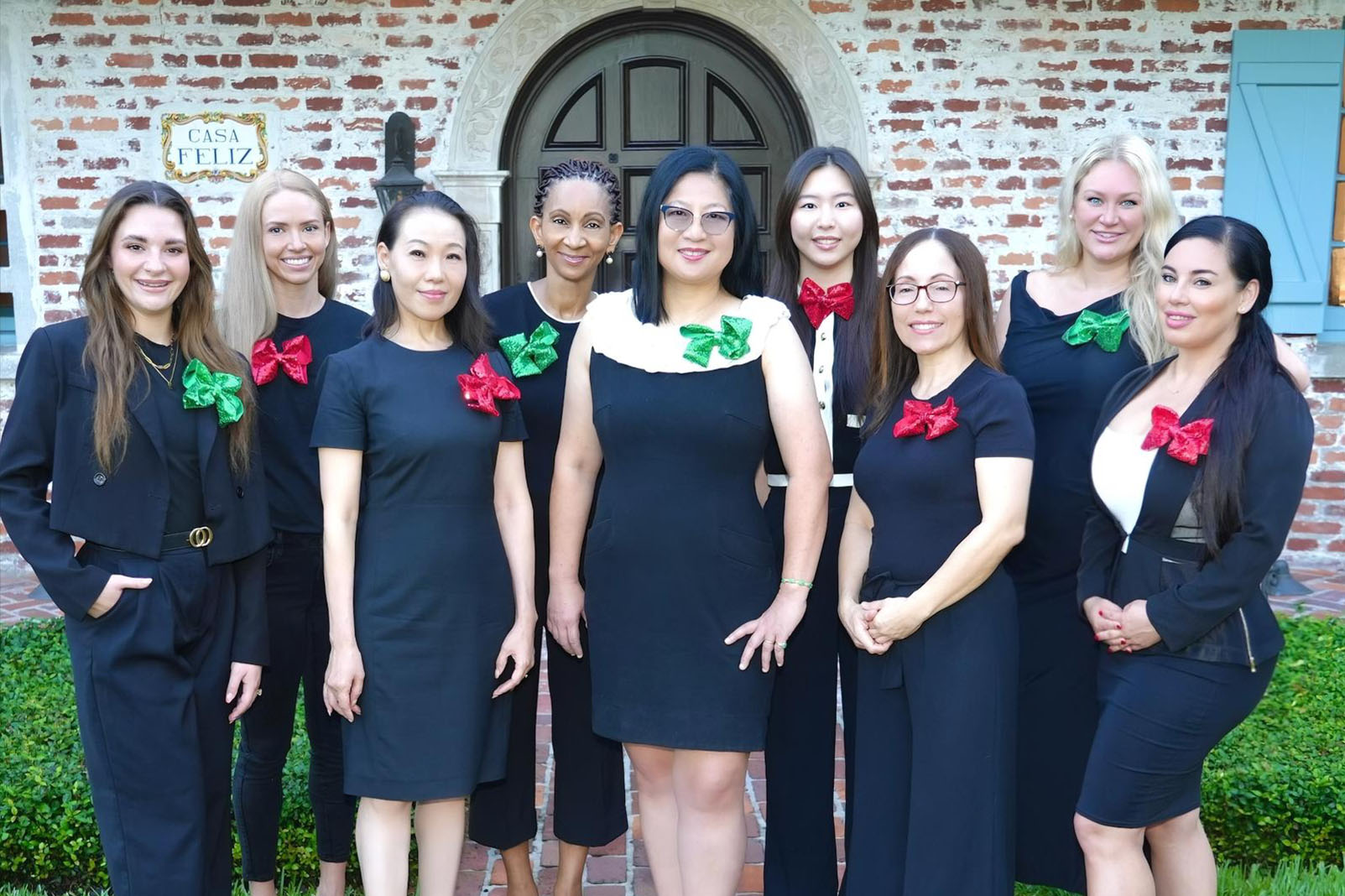
CEREC puts the laboratory inside the dental office by using a fully digital workflow to design and mill ceramic restorations right at the chairside. That means patients can often leave the office with a finished crown, inlay, or onlay after a single appointment instead of returning for multiple visits. For people with busy schedules or those seeking to reduce the number of dental appointments, this streamlined approach offers real convenience without sacrificing quality.
Beyond the time savings, the digital process reduces the need for traditional impression materials and temporary restorations. The result is a more comfortable experience for patients and a more predictable fit for the final restoration. Because the restoration is fabricated and placed in one visit, there are fewer opportunities for laboratory miscommunication or delays, helping ensure a smoother, more efficient treatment sequence.
At Fay Hu General Dentistry, we combine the practical benefits of same-day treatment with an emphasis on aesthetics and durability. Our goal is to deliver restorations that look natural, feel comfortable, and integrate seamlessly with your existing teeth—so you can get back to your life with confidence after a single appointment.

CEREC begins with an intraoral scanner that captures detailed, three-dimensional images of the prepared tooth and surrounding structures. These digital impressions are fast to obtain and eliminate the discomfort some patients experience with conventional impression putty. The high-resolution scan provides a precise anatomical map that becomes the foundation for a well-fitting restoration.
Once the digital data is captured, specialized CAD (computer-aided design) software allows the dentist to sculpt the restoration on-screen. The digital environment makes it easy to refine contours, contacts, and occlusion before any material is milled—minimizing adjustments at the time of seating. This level of control helps produce a restoration that performs well and looks natural alongside adjacent teeth.
Because the process is digital, records and designs can be archived and referenced later if needed. This capability supports long-term care planning and makes future restorative work more straightforward by providing accurate baseline data for ongoing treatment decisions.

After preparing the tooth and obtaining a digital scan, the clinical team uses CAD software to design the restoration with attention to fit, function, and esthetics. The dentist evaluates the virtual model, makes any necessary refinements, and approves the final design. This collaborative approach between clinician and software helps ensure that the restoration matches your bite and tooth contours.
The approved design is then sent to a chairside milling unit that carves the restoration from a block of high-strength ceramic. Milling typically takes only minutes, and once the piece is finished, it is tried in and adjusted for occlusion and contact points. Final surface characterization and glazing produce a lifelike translucency and shine that blends with the surrounding dentition.
Because each step takes place in the same office, the team can immediately address fit and esthetic concerns. This close coordination between scanning, design, and fabrication is a key reason why single-visit restorations are both precise and predictable.

CEREC restorations are milled from durable ceramic blocks selected for strength and esthetics. Modern dental ceramics offer excellent wear resistance while providing the translucency and color depth that mimic natural enamel. When properly designed and bonded, these restorations can sustain normal chewing forces and present a highly polished, natural-looking surface.
Color matching and surface texture play a major role in a restoration’s final appearance. Using chairside staining and glazing techniques, clinicians can fine-tune shade and luster so the ceramic blends with adjacent teeth. The result is an integrated restoration that complements your smile rather than standing out as an obvious repair.
Long-term success also depends on proper bonding and occlusal design. CEREC restorations are bonded using contemporary adhesives and protocols that create a strong interface between the tooth and ceramic. With routine oral care and periodic professional checkups, these restorations contribute to reliable function and attractive results.
CEREC is a versatile tool that supports a range of restorative needs—from single crowns to inlays, onlays, and small anterior restorations. It works particularly well when the clinical objective emphasizes tooth conservation, esthetic integration, and a rapid turnaround. In many cases, CEREC can be combined with other digital diagnostics, such as intraoral records and radiographs, to form part of a broader treatment plan.
For patients who require multi-tooth rehabilitation, implant restorations, or complex occlusal adjustments, the digital data produced during a CEREC visit can inform subsequent phases of care. Clear records and precise fits help facilitate coordination between clinicians, whether a restoration is completed chairside or later refined in a laboratory setting.
Ultimately, the decision to use CEREC is made with clinical goals and patient preferences in mind. When appropriate, it provides an efficient, high-quality option that supports restorative longevity, esthetic outcomes, and a comfortable patient experience.
In summary, chairside ceramic restorations made with CEREC technology offer a modern alternative to traditional multi-visit workflows by combining digital precision, durable materials, and a patient-centered experience. Whether you are replacing a damaged tooth or updating an old restoration, this approach can reduce treatment time while delivering predictable, natural-looking results.
If you would like to learn more about same-day ceramic restorations or whether this option is right for your situation, please contact us for more information. Our team at Fay Hu General Dentistry is happy to explain the process and help you make an informed decision about your care.

Today, there's no need to merely imagine how nice it would be to have a dental crown fabricated in a single visit. With CEREC technology and advanced systems of care, multiple trips to the dentist are a thing of the past! Now, one appointment is all it takes for our skilled and experienced dentist to design, fabricate, and place a naturally beautiful and long-lasting same-day crown. And, best of all, unlike conventional methods of care, you won't have to endure messy dental impressions, wear a temporary crown, or wait weeks for your permanent restoration to come back from the laboratory.
Offering a level of precision and comfort that exceeds conventional methods of care, CEREC technology is nothing short of amazing! Advanced CAD/CAM technology, which stands for computer-aided design and computer-aided manufacturing, enables our dentist to translate images from an optically scan tooth into a 3D virtual model upon which a custom crown can be digitally designed. Once this step is done, the detailed specs are then wirelessly transmitted to a chairside 3D milling machine to fabricate your new ceramic crown while you wait!
With conventional methods of care, a dental crown can take two to three visits to fabricate and place. However, thanks to the benefits of CEREC technology, we can prepare a tooth, then design, fabricate, and place your new crown, all while you wait.
With CEREC same-day crowns, there's none of the mess of conventional dental impressions, wearing dental temporaries, or waiting for the final crown to come back from the lab. Once the prepared tooth is optically scanned and the restoration digitally designed, your new crown can be milled from the highest quality of dental ceramics that very same visit.
CEREC same-day crowns and restorations are fabricated from the highest quality of dental ceramics. Because dental porcelain reflects light in much the same way as dental enamel, your new crown will look flawless, completely natural, and blend seamlessly with your smile.
A CEREC same-day crown offers much more than a convenient approach to getting a dental crown. It is also a high quality, naturally beautiful, extremely durable, and long-lasting dental restoration! The fact is, with proper oral hygiene and routine dental care your new crown will serve your smile well for many years to come.
CEREC stands for Chairside Economical Restoration of Esthetic Ceramics and refers to a digital system that designs and fabricates ceramic restorations in the dental office. Unlike traditional crowns that typically require multiple visits and temporary restorations while a lab fabricates the final piece, CEREC enables the dentist to complete the entire process in a single appointment. The workflow replaces physical impressions with an intraoral scan and uses CAD/CAM software to design a restoration that is then milled from a ceramic block on site.
This approach reduces the number of visits and eliminates the need for temporary crowns, but it still follows the same principles of tooth preparation, precision fit, and proper occlusion. Clinically, the goal remains the same: restore form, function, and esthetics while preserving as much healthy tooth structure as possible. Many patients appreciate the time savings and streamlined experience, while clinicians retain control over fit and shading during the appointment.
Same-day CEREC restorations offer convenience by completing treatment in a single visit, which reduces appointment time and avoids temporary crowns that can dislodge or irritate the gums. The digital workflow improves comfort because intraoral scanning is typically faster and less messy than traditional impressions, and adjustments can be made immediately based on the digital model. In addition, milling ceramic restorations chairside allows for precise control of shape and occlusion so the final restoration can be refined before it is bonded.
Clinically, the use of advanced ceramics provides excellent esthetics and biocompatibility, and the elimination of a laboratory turnaround can lower the risk of communication errors. Faster treatment often increases patient acceptance and can simplify restorative planning, especially when multiple teeth or stages are involved. At Fay Hu General Dentistry, the team emphasizes predictable results and patient comfort throughout the same-day process.
The CEREC procedure starts with a clinical exam and any necessary preparations to remove decay or old restorations, followed by shaping the tooth to receive the new restoration. An intraoral scanner is then used to capture detailed three-dimensional images of the prepared tooth and surrounding teeth, replacing the need for physical impression materials. Those images are imported into CAD software where the dentist designs the crown, inlay, or onlay, adjusting anatomy and contacts on screen to achieve proper fit and occlusion.
Once the design is finalized, the data is sent to a chairside milling unit that fabricates the restoration from a solid ceramic block while the patient waits. The milled restoration is finished, stained or glazed if needed, and tried in the mouth for fit and esthetics before being permanently bonded. Final polishing and bite verification complete the appointment, leaving patients with a finished restoration the same day.
Good candidates for CEREC restorations include patients who need single-tooth restorations such as crowns, inlays, or onlays and who prefer to complete treatment in one visit. CEREC works well for many restorative situations, including teeth with large fillings, fractured cusps, or cosmetic concerns that can be addressed with ceramic materials. Patients with severe tooth destruction, complex full-mouth rehabilitation needs, or certain occlusal conditions may require a more comprehensive treatment plan that could involve laboratory-fabricated prosthetics.
A dentist will evaluate each patient's oral health, bite relationships, and restorative goals to determine suitability for CEREC. Factors such as adequate remaining tooth structure, healthy surrounding tissues, and realistic expectations support successful outcomes. If a patient is unsure whether CEREC is appropriate, a consultation and diagnostic imaging will clarify the best restorative pathway.
CEREC commonly uses high-strength ceramic materials such as monolithic zirconia, lithium disilicate, and other dental ceramics formulated for chairside milling. These ceramics are chosen for their combination of esthetics, strength, and wear resistance, and they can be characterized with stains or glazed to match adjacent teeth. The selection of material depends on the tooth location, functional demands, and esthetic considerations decided by the dentist and patient.
When properly designed, milled, and bonded, CEREC ceramic restorations can be highly durable and perform well under normal chewing forces. Long-term success also depends on proper occlusal adjustments, oral hygiene, and routine dental care. Regular follow-up exams allow the dentist to monitor the restoration and address any wear or marginal concerns early.
The lifespan of a CEREC restoration varies with factors such as the material used, the tooth’s location, the patient's bite, and oral hygiene habits, but many well-made ceramic restorations provide years of reliable service. Regular dental checkups, good brushing and flossing techniques, and managing parafunctional habits like clenching or grinding are important for prolonging restoration life. The dentist may recommend a night guard for patients with bruxism to protect both natural teeth and restorations.
Patients should avoid using restored teeth as tools for opening packages or biting excessively hard objects, which can increase the risk of fracture. If sensitivity, looseness, or changes in bite are noticed after placement, patients should contact the dental office promptly for evaluation. Routine professional cleanings and periodic x-rays help the clinician detect underlying issues before they affect the restoration.
CEREC restorations can be highly precise because the workflow uses digital impressions and CAD/CAM design tools that allow detailed control over margins, contacts, and occlusion. The chairside milling and finishing steps give the dentist the ability to fine-tune anatomy and shade while the patient is present, which often results in a very natural appearance. For many cases, milled ceramics match the esthetics of laboratory-fabricated restorations closely, especially when the clinician selects appropriate materials and follows meticulous finishing protocols.
There are instances where laboratory-fabricated restorations may offer advantages, such as complex multi-unit bridges, layered porcelains with specialized staining, or certain esthetic demands that require custom laboratory techniques. The dentist will recommend the best approach based on the clinical requirements and the patient's expectations to achieve an optimal balance of esthetics and function.
Recovery after a CEREC restoration is typically straightforward because the treatment is completed in one visit and there is no temporary crown to manage. Mild sensitivity to temperature or pressure can occur for a few days as the tooth settles, and this usually resolves on its own or with over-the-counter analgesics if needed. The clinician will verify the bite and make occlusal adjustments before final bonding, which minimizes postoperative discomfort related to high contacts.
Patients should follow routine oral hygiene and avoid very hard or sticky foods for the first day if possible while any bonding cement fully sets. If there are persistent symptoms such as severe pain, swelling, or signs of infection, patients should contact the dental office promptly for an evaluation. Regular follow-up appointments allow the dentist to confirm that the restoration and surrounding tissues remain healthy.
CEREC is part of a broader digital dentistry ecosystem that often includes intraoral scanning, digital radiography, and sometimes CBCT imaging for comprehensive treatment planning. Intraoral scanners create the detailed 3D models that feed directly into the CEREC CAD software, enabling accurate design and fit. When additional diagnostic information is needed, such as implant planning or evaluation of underlying bone, CBCT images can be used alongside intraoral scans to inform the restorative approach.
The interoperability of digital tools improves communication, accuracy, and predictability across procedures, from single crowns to implant restorations and complex rehabilitations. Digital color matching, chairside milling, and in-house finishing work together to streamline care while maintaining clinical control over the final result. Clinicians trained in digital workflows can take advantage of these technologies to provide efficient, coordinated treatment for patients.
At Fay Hu General Dentistry, the team combines clinical experience with advanced digital technology to provide precise and comfortable CEREC restorations. The office uses ergonomically designed intraoral scanning tools and high-quality milling materials to minimize discomfort and deliver well-fitting restorations during a single visit. Clinical protocols include careful tooth preparation, digital design review, and intraoral verification to ensure proper function and esthetics before final bonding.
The practice emphasizes patient education and clear communication so patients understand each step of the process and what to expect during and after treatment. Follow-up care and routine examinations are part of the restorative plan to monitor the restoration and overall oral health, helping to maintain long-term success and patient satisfaction.

We are dedicated to providing the highest quality of dental care to our patients.
Through excellence in dentistry and quality in relationships, we strive to positively impact your oral health, aesthetics, and self-esteem. From the front desk to the treatment room, our experienced team is here to support you with expert care and genuine compassion.